3 Seconds of Fate: How to calculate your safe speed in the intersection
Toronto, Ontario, Canada
In my previous story, I introduced KPH-MPS conversion formula [? KPH x 0.3 = ? MPH] to see how fast your motorcycle moves in one second, and also encouraged all riders to finish scanning ahead well before entering a curve or an intersection to be safe.
WHAT IF your speed is over the posted limit? What kind of risk will you be faced with? Many serious / fatal accidents happen at intersections. So, let’s simulate some case studies.
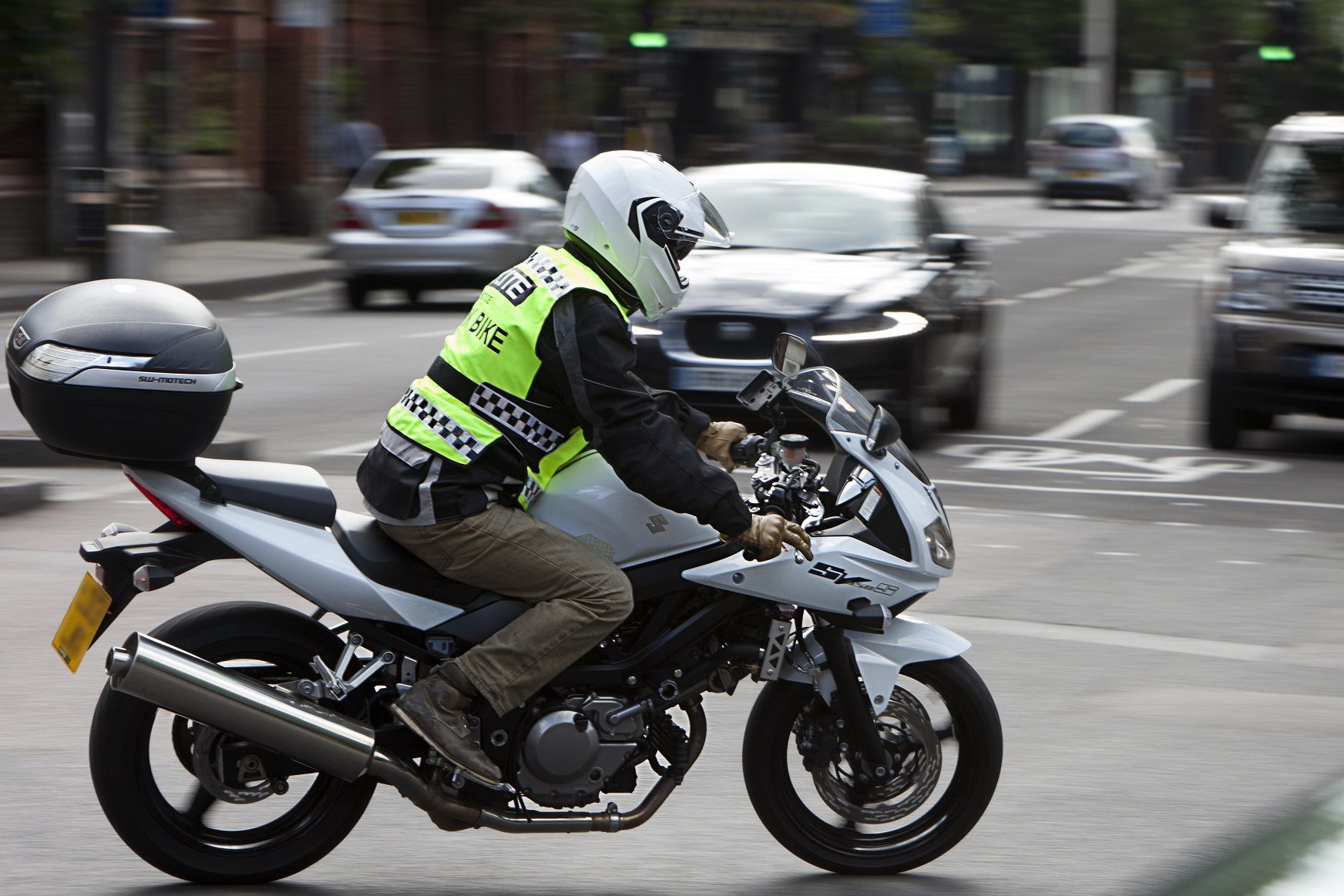
Navigating intersections: It can take you up to 5 seconds to make a left turn
We often see many vehicles over the posted speed limit. For instance, nearly 80KPH in a 60KPH zone; nearly 100KPH in an 80KPH zone. You might be that rider.
If your speed is 80KPH, your bike moves 24MPS (metres per second). What will happen if you ride 80KPH or 70KPH when you cross an intersection in a 60KPH zone? Many of those 60KPH zone intersections have 2 or 3 lanes, even 4 lanes with an island in each direction, and let's say you ride a motorcycle that is easily hidden by other vehicles.
From LEFT-turn vehicle driver’s view, the driver will not see you well if you are 2 seconds away (80 KPH x 0.3 x 2 sec = 48 MPS), or even one second away (24 MPS).
Let’s do some simulations
This simulation is a 2 lane street, and the motorcycle is approaching from the right side lane. The distance is 54 meters away from the small size passenger car. The motorcycle will take 3 second to reach (or I should say “impact” ?) the car at 60 KPH. The distance between pylons and the car is 10 meters. Please see how tiny we are in driver’s view.

Front 54 m
In the photo above, the motorcycle is seen very tiny but still visible. However, when the rider is at the front of the traffic flow, they are BLENDED-in when big size vehicles like SUV or a 5-ton truck is behind or beside you. Because humans tend to see an object which is easy to see and recognize, first, you won’t be seen quickly. The car driver will see the bigger vehicle first.
On top of that, many modern cars and SUVs have thicker A-Pillars to support side airbag systems, so you will be easily hidden behind the A-Pillar (in blind spot) or rear-view mirror. The motorcycle is hidden behind the A-Pillar when it is 15-12 meters away from the car.

Front 15 m
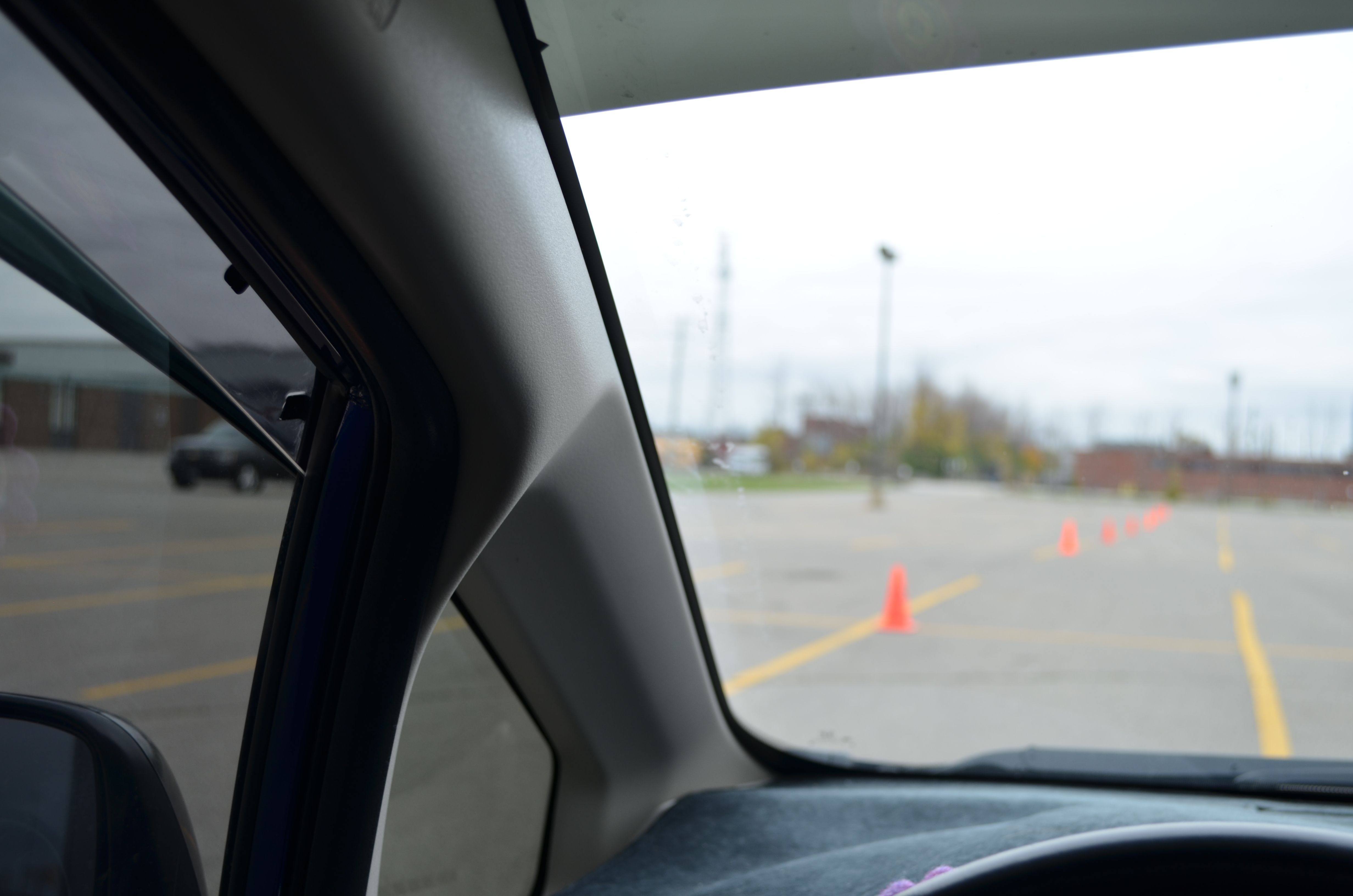
Front 12 m
How about when the motorcycle approaches from right side? Do you see the motorcycle at 54 meters away from the car?

Right 54 m
Again, the motorcycle is hidden behind A-Pillar when it is 15 meters away from the car. When it is 12 meters away, motorcycle appears, but still a little difficult to see if the driver doesn’t pay attention well.
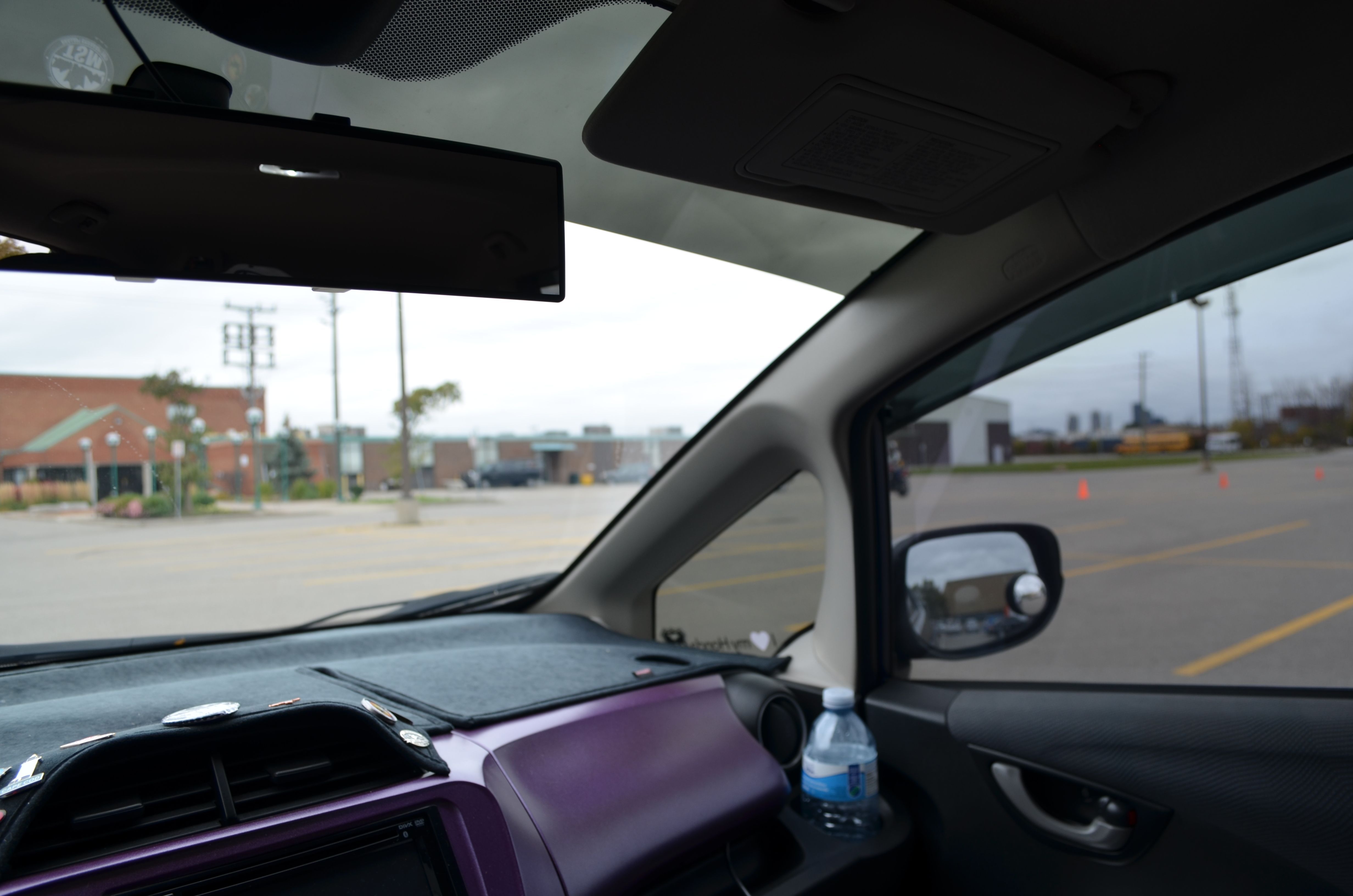
Right 15 m

Right 12 m
OK, how about the other direction? The bike is coming from left side and is 54 meters away from the car. Can you see the bike?
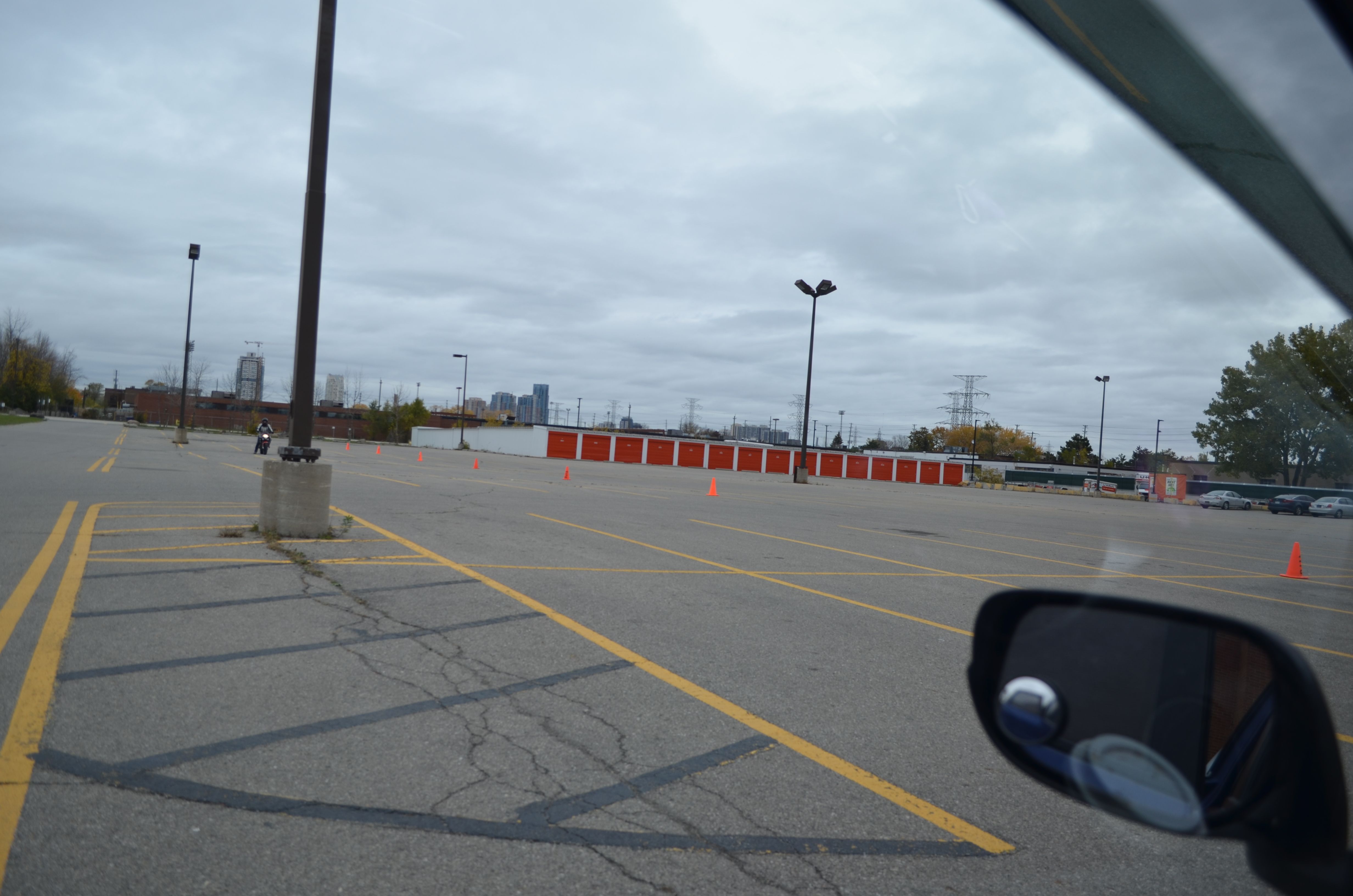
Left 54 m
Then 12 meters… the bike is more difficult to see, especially on a cloudy day.
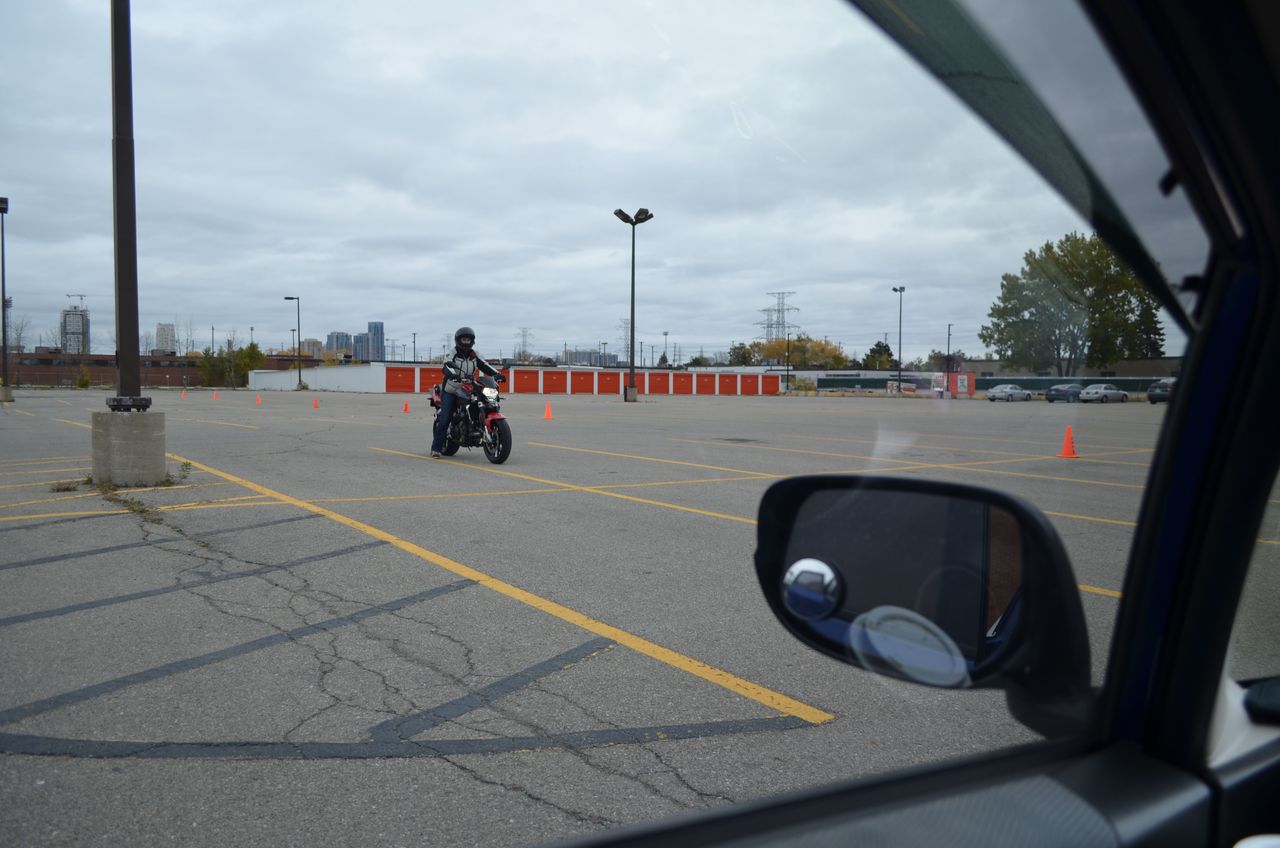
Left 12 m
How many seconds does it take a car to make a turn at an intersection?
I was at several intersections observing and measuring how many seconds a car, Mini-Van, SUV size vehicle take to finish making both right and left hand turns. Timing is different for LEFT-HAND turns at intersection that have 2 to 4 lanes or have an island. I myself also drove through those same intersections and my passenger checked the time with stopwatch.
Consider the average width of the lane at each intersection is 5 meters. The average turning speed was 2 second for 1 lane, 3 second for 2 lanes, 4 second for 3 lanes, 5 second for 4 lanes with an island to finish a left turn from zero speed. If there is an island even on a 2 lanes intersection, the time is increased another 1-2 second. Making a right turn from zero-kph took roughly 2.5 second on average. IF these cars turn without stopping, the speed is roughly 0.5 - 1.0 seconds faster. And these numbers were not affected by pedestrians. If they are affected by pedestrians, the result timing will be longer, of course.
Remember stopping distance consist of two parts
In my previous article, I also mentioned the stopping distance consists of two parts. That is the “Thinking/Reaction Distance" and the "Braking Distance”. These two are affected by type of vehicles, individuals, road surfaces, and weather condition.
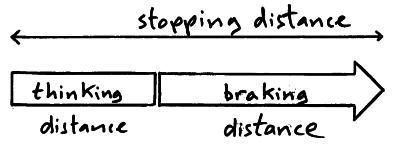
Stopping Distance
IF your speed is 80KPH on 60KPH street, 3 second before reaching an intersection and you adjust your speed to 70KPH, what will happen?
Assuming you adjusted your speed to 70KPH in one second. Now you have 2 seconds. Your speed is 70KPH, which means you are only 42 meters away from the car. Now consider the left turn vehicle driver needs thinking/reaction distance and braking distance.
In general, many drivers will stop at the intersection if they think your bike is moving faster than the time it takes to complete a left turn. But if the driver fails to correctly estimate how long it will take to complete a left turn in a 1 or 2 lanes intersection, the driver may apply braking too late or not give him/her self enough time to complete the turn.
Are you prepared if threshold happens at an intersection?
Considering my observational fact and numbers above and also the case study / simulations I provided. Check your own MPS (metres per second) that you normally ride, observe how you normally execute intersections, check how you ride in posted speed limits in your route AND your skill levels of evasive maneuver and threshold braking will improve.
As we noticed in these photographs, motorcycle riders are seen very tiny. And we also observed that an automobile takes a longer time to execute a turn through an intersection (either right turn or left turn) than we think.
Now we understand why many drivers at collision scene said “I didn't see the motorcycle”. Therefore, we cannot assume “driver should be able to see me” BUT think “the driver does not see me, I must be careful and be ready for a threshold maneuver; what are my options now?” especially when we are approaching ANY intersection. Please never overestimate other vehicle drivers’ traffic scanning skill and your own riding skill levels even if your motorcycle is a brand-new model with many safety features such as ABS, Traction Control, or even an airbag.
The bottom line to motorcycle safety is SLOW DOWN, SCAN, TAKE YOUR TIME TO EXECUTE THE INTERSECTION, PREPARE FOR EVASIVE ACTION / THRESHOLD BRAKING.
I hope you enjoy my safety articles. You can find more here https://eatsleepride.com/rider/YoshiNakatani God speed, everyone!
You must be logged in to comment
Login now
I added a 120dB rally car horn to my bike. I keep my thumb over the horn button and a finger on the front brake lever through every intersection, past every driveway, idiot cluster, etc. I also added an unmissably bright Baja Designs LED rally headlight. I have crazy bright, colourful riding gear and helmet too.
It also helps to know the vehicle types that pose the greatest threat. My closest calls here in Toronto have boiled down to: Beck taxis, minivans (the older they are, the more sloppy the driving), mid-sized delivery trucks, young females in large SUVs, all BMWs and inbreeds in tuner cars. Audis are also becoming more popular among the willful cretins. Curious thing I noticed was that young men in huge domestic pickups are more aggressive when you're driving a car vs riding a bike; the ones in Japanese pickups seem not much of a threat. Politics and vehicular classism in play...